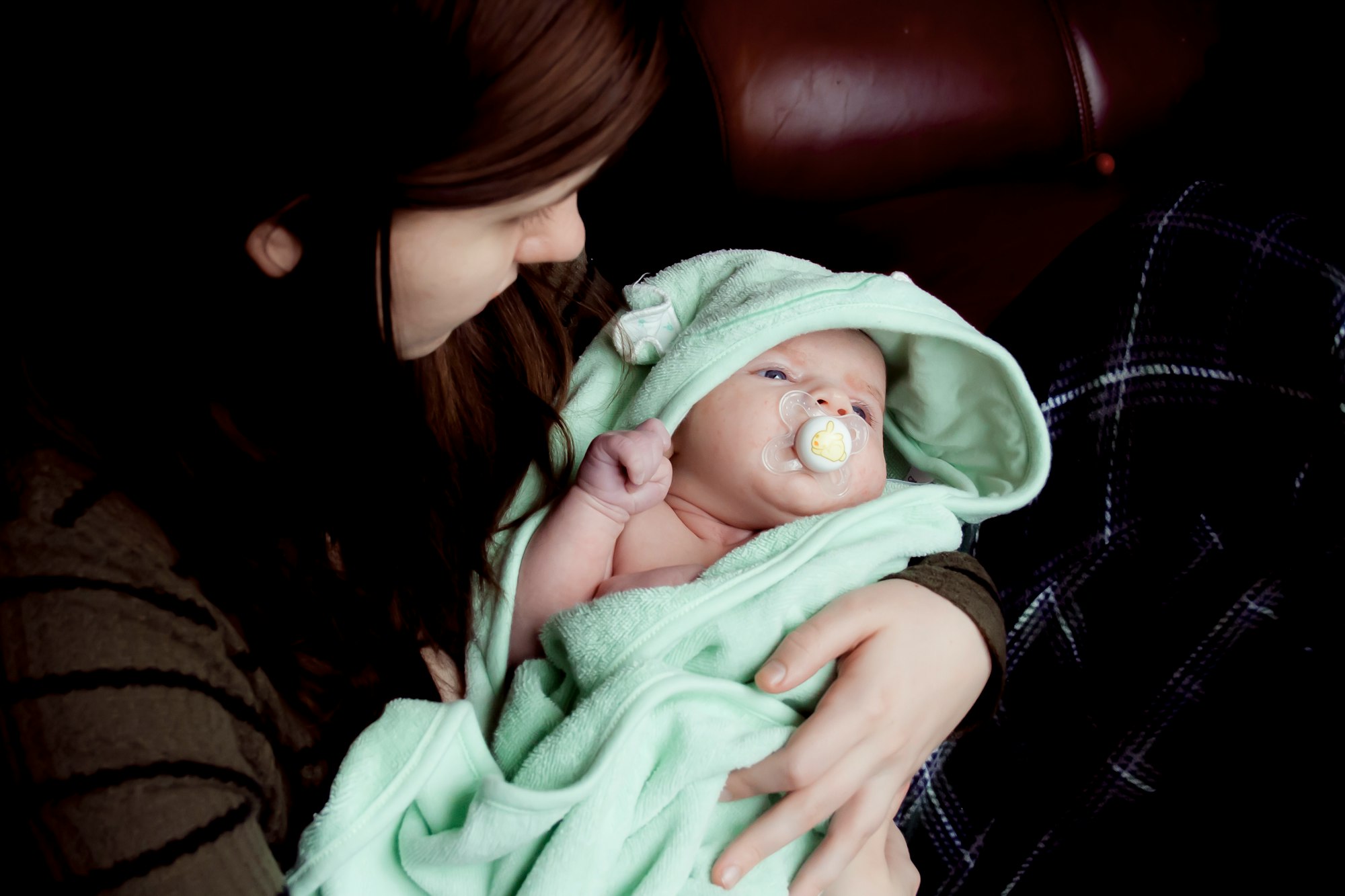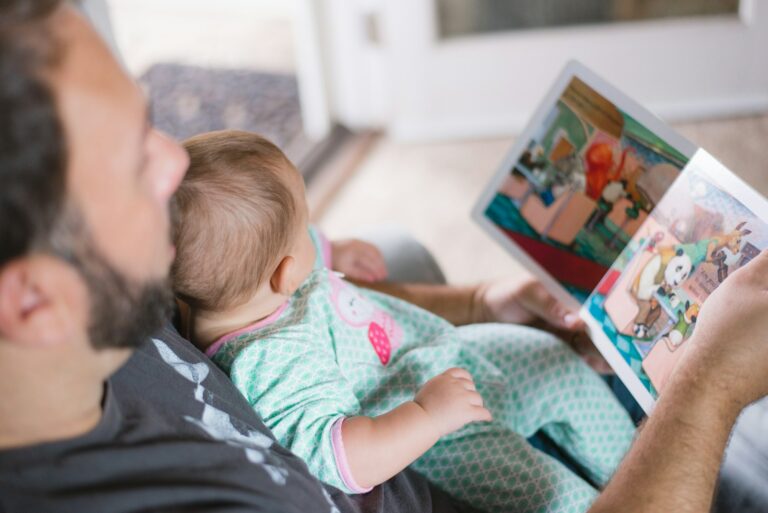Ever noticed your baby’s breathing becoming faster, or hear a faint whistling sound every time they exhale, especially during the chilly season or amid bouts of runny nose? If the thought of infant bronchiolitis makes you anxious, you’re far from alone; countless parents wonder how something that appears as a mere cold turns into a challenging episode of laboured breaths and interrupted feeds for their little one. For many, these questions pop up suddenly—often accompanied by confusion and, occasionally, a fair share of sleepless nights. So, what actually happens inside those tiny lungs, why does it hit hardest in such young children, and what’s genuinely effective in reducing risks and supporting recovery? Take a deep breath, let’s explore all the pivotal points you ought to know about infant bronchiolitis—from causes to care to prevention—with the understanding that your concerns are as valid as the science guiding treatments.
Understanding Infant Bronchiolitis: What Sets It Apart?
Infant bronchiolitis behaves rather sneakily. It often tiptoes in, pretending to be a simple cold—think mild fever, runny or stuffy nose, light cough. Within days, though, parents might notice their baby breathing faster, pulling in their chest around the ribs, or seeming unsettled while feeding. What’s happening? The real trouble is deep in the bronchioles—the tiniest air passages of the lungs—where viral invaders, especially the notorious respiratory syncytial virus (RSV), provoke swelling, sticky mucus, and narrowed pathways.
Unlike bronchitis (targeting larger airways and more common in older children or adults) or pneumonia (which affects the lung tissue itself and often comes with higher fevers and more dramatic symptoms), infant bronchiolitis reserves most of its energy for the youngest. Babies aged 2 to 6 months, with airways only a few millimetres wide, find themselves most at risk. Infants born prematurely, with chronic lung disease, congenital heart disease, or weaker immune systems are particularly vulnerable.
Causes, Contagion, and Who’s at Risk
Nearly every parent hears about RSV during the first years of raising a child. This virus, the major culprit, works efficiently but it’s not alone—rhinovirus, adenovirus, parainfluenza, and even, sometimes, influenza make the rounds too. Viruses cast a wide net, thriving on respiratory droplets from sneezes, coughs, or tiny fingers that carry germs from a contaminated toy to a curious mouth. In the right conditions—think humid rainy season or a crowded daycare—they travel quickly. Why do some infants catch it so swiftly? Immature immune systems, small airways, and exposures like second-hand smoke or siblings coming home with runny noses top the list.
Risk factors to look out for:
- Age under 6 months, especially those under 3 months.
- History of prematurity or low birth weight.
- Pre-existing heart or lung disease.
- Daycare attendance, siblings at home, crowded living spaces, tobacco smoke exposure.
- Peak seasons, whether winter or monsoon depending on the local climate.
Does this mean parents are powerless? Not at all. Simple preventive steps—frequent handwashing, using hand sanitizer, cleaning toys, ventilating rooms, keeping babies away from cigarette smoke—create a strong frontline defence.
Recognising the Signs: When Is Bronchiolitis More Than Just a Cold?
Early on, the differences are subtle. Infant bronchiolitis often begins as a cold: stuffy or runny nose, coughing (first dry, gradually “wetter”), low-grade fever, and perhaps a touch of irritability or reluctance to feed. But as virus-induced swelling and mucus build up, the game changes:
- Coughs intensify, breathing rate increases (over 60 breaths per minute grabs attention).
- Wheezing (that gentle whistle) appears; you see nostrils flaring and skin tugging inwards near the ribs—both signs baby is putting in extra effort to breathe.
- Feeding gets cut short or causes fatigue.
- In severe cases, lips or fingertips turn bluish (cyanosis), or pauses in breathing (apnea) emerge—especially disturbing in very young infants.
- Dehydration sneaks in if feeds drop—look for dry mouth, fewer wet nappies, no tears when crying.
One question to ponder: does your baby seem unusually sleepy, very hard to wake, or keeps vomiting after coughing? Those are loud alarms; immediate medical evaluation is needed.
How Diagnosis Works: What to Expect at the Clinic
For nervous parents, the thought of doctors using complicated machines and tests can be daunting, but much rests on simple observation and clinical exams. Infant bronchiolitis is, above all, a clinical diagnosis. Doctors:
- Check breathing rates and watch for retractions or nasal flaring.
- Listen for wheezing or crackles through a stethoscope.
- Measure oxygen saturation with a clip on the baby’s finger or toe; readings below 92% may prompt extra oxygen.
- Assess how well the baby feeds.
Not everyone needs laboratory confirmation. Some may receive a gentle swab for RSV or influenza if infection control is needed (think hospitals or especially vulnerable infants). Chest X-rays and blood tests? Often unnecessary unless doctors suspect bacterial pneumonia or see atypical findings.
Distinguishing between infant bronchiolitis, asthma, or allergies sometimes causes confusion—timing, symptoms, and feeding difficulties help doctors make the call.
Complications to Watch and Understand
While the vast majority of babies recover, some speedbumps warrant attention. Short-term complications include:
- Escalating breathing distress or pauses in breaths (apnea).
- Dehydration due to poor oral intake.
- Secondary infections, such as pneumonia or ear infections.
There are longer-term concerns. Some children, particularly those with family histories of allergies or eczema, may experience repeated wheezing or even develop asthma as they grow, though most outgrow the problem. Chronic issues, like bronchiolitis obliterans (scarring of the airways), remain rare.
Which infants are likely to face the hardest battles? Those younger than 3 months, born prematurely, or managing underlying health conditions require more vigilant monitoring.
Treatment and Care: Practical Strategies for Parents
Perhaps the most relieving news: management of infant bronchiolitis focuses primarily on supportive care. So what does that mean at home—or in the hospital?
- Ensure fluids: offer small, frequent feeds. If your baby struggles to drink, IV fluids may be given in the hospital.
- Nasal congestion: saline nose drops followed by gentle suction before feeds or sleep help clear airways.
- Monitor: keep an eye on breathing, check for signs of effort, rapid rates, or color changes.
- Humidify and rest: a comfortable, smoke-free, clean environment with adequate humidity brings comfort.
- Medications? Routine antibiotics or inhaled drugs like bronchodilators (example: salbutamol) aren’t standard, unless secondary bacterial infection is suspected. Corticosteroids and chest physiotherapy generally add little benefit.
- Fever: acetaminophen can soothe discomfort or mild fever (check age and dosage guidance).
Hospital admission makes sense if oxygen remains low, feeds can’t be managed, or breathing work is persistent. High-risk infants may receive additional preventive therapies, like monoclonal antibodies during RSV season.
Prevention: Building Barriers Against Bronchiolitis
Looking to cut down on recurrent sickness? Prevention is built on everyday habits:
- Hand hygiene—soap, water, or alcohol-based sanitizer.
- Clean and disinfect toys, pacifiers, and utensils.
- Ventilate living spaces regularly, keep the home smoke-free.
- Minimize crowding and avoid anyone who appears ill during the RSV or flu season.
- Consider using a mask if you are unwell while caring for your baby.
Exciting medical advances include maternal RSV vaccination and monoclonal antibodies (like nirsevimab), especially for preterm or high-risk babies—discuss with your paediatrician if your child qualifies.
Prognosis: What Lies Ahead for Most Infants?
Wondering whether your child will bounce back fast, or if this brush with infant bronchiolitis will leave scars? Most children recover in 7–10 days, though the cough can linger up to four weeks. Younger infants or those with health challenges may take longer, warranting closer follow-up. Repeat episodes of wheezing, or later asthma, are possible but not guaranteed.
Short-term setbacks do not dictate a lifetime of lung problems—most children emerge healthy, active, and stronger, thanks in part to attentive parents and timely interventions.
Supporting Parents: Practical Steps and Emotional Reassurance
Every parent deserves respect and support while managing infant bronchiolitis. Focus on comfort: maintain hydration with small, frequent feeds, use saline drops and gentle suction for relief, and provide a smoke-free atmosphere. Watch for warning signs but also allow time for recovery and rest. Good hand hygiene before and after caring for a baby is a habit worth maintaining for the entire family.
If symptoms worsen—fast breathing, bluish lips, constant sleepiness, or feeding becomes impossible—don’t hesitate to seek medical help. The journey may feel relentless but resources, reliable information, and compassionate healthcare professionals are available when doubt creeps in.
Community resources, including support groups and experienced networks, can make a world of difference, both for practical advice and emotional fortitude. Do consider reaching out; answers and comfort may be just a conversation away.
Key Takeaways
- Infant bronchiolitis ranks as one of the most common viral breathing problems in babies, especially under 6 months.
- Symptoms may start mild but can progress rapidly—staying alert to changes in breathing or feeding is essential.
- Main risk factors include age under 6 months, premature birth, chronic heart or lung conditions, and environmental exposures like tobacco smoke.
- Supportive care—hydration, suctioning, rest—is the mainstay, with limited role for medication.
- Prevention is powerful: hand hygiene, a clean environment, avoiding sick contacts, and new preventive therapies for the vulnerable.
- Most infants recover completely without long-term complications; regular follow-up supports peace of mind.
- Reliable guidance, health resources, and community networks exist for every step—explore personalised advice and free child health screening questionnaires with the Heloa app.
Questions Parents Ask
Can infant bronchiolitis be prevented from recurring in future seasons?
The desire to shield your baby from illness is deeply understandable. Recurrence of infant bronchiolitis can’t always be avoided entirely, but many practical steps go a long way. Repeat handwashing, regular sanitising of toys and objects, and limiting baby’s contact with people showing cold or cough symptoms truly help decrease risk. For babies at particularly high risk—especially those with a history of prematurity or other health complications—certain preventive medications or latest monoclonal antibody injections are available; always best to discuss with your child’s doctor about eligibility and new recommendations available each year.
Is infant bronchiolitis contagious, and how long should a baby stay home from daycare?
Absolutely, infant bronchiolitis spreads quite quickly amongst children, especially in places where little ones gather. The viruses behind it can survive on hands and surfaces for hours. Best practice is to keep your baby at home until fever disappears, breathing improves, and energy returns—usually about a week from when symptoms began, but individual recovery may vary. Always consult your healthcare provider for specific guidance, especially if your baby is very young or vulnerable.
Does infant bronchiolitis increase the risk of developing asthma later on?
Many parents are concerned about this link. Evidence suggests that some babies, especially those experiencing severe infant bronchiolitis or who have a family history of allergy or asthma, might develop wheezing more often in later years. However, a significant number of children go on to have normal lung development and don’t meet criteria for asthma. Regular check-ups and open discussion about persistent symptoms help ensure any concerns are addressed promptly—offering peace of mind and early intervention if needed.
Further reading:









